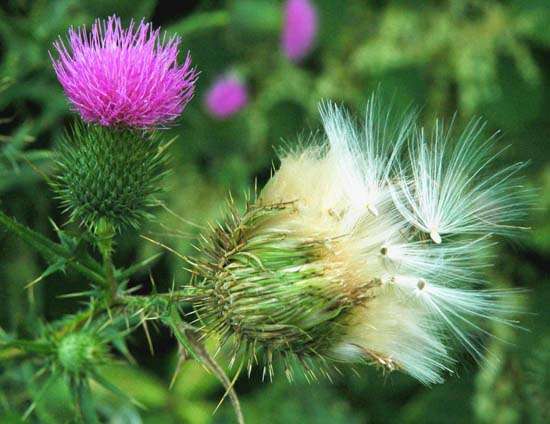
Bull thistle is a common biennial thistle that was once native to Europe and Asia but has since been brought to North America. This thistle is primarily an issue in hay fields and pastures, despite its menacing look and occasional ability to grow into big infestations. It is not as difficult to control as many other thistles. In paths, roads, and open fields, bull thistle is also frequently encountered.
Habitat
Bull thistle is generally found in disturbed places such as roadside ditches, trails, logging areas, unoccupied ground, pastures, and cultivated land. Bull thistle favours sunny, open regions and can endure a broad range of conditions, from moist to dry soils. Bull thistle can invade overgrazed pastures and can grow in dense stands that lower stocking levels and productivity. Bull thistle may also smother woodland clearings and slow the growth of young trees.
Identification
The life cycle of the bull thistle spans two years, with flowering and seed production occurring in the second year. While seeds only last a brief time on the soil’s surface, they can survive for many years when buried, as in the case of cultivation activities. Fall and spring are the two seasons when seeds typically germinate. Up to 3 feet in diameter, basal rosettes can form and keep growing all the way through the winter. If the rosette is too small by spring, it might not bloom until the following year. Mid-June is usually when flowering begins, and it lasts until early September. Plants can be insect- or self-pollinated. Bull thistle doesn’t have rhizomes or vegetative reproduction.

Branching, erect biennial, 2 to 6 feet tall; rosettes develop in the first year flowering stems the second; long, sharp spines on the leaves at the midrib and the tips of the lobes; deeply lobed and hairy leaves; leaf bases extend down onto stems and form spiny wings along the stems.
Each stalk is topped with pink-magenta flower heads, which are “gumdrop” shaped and have spines extending from the base. They bloom from June to September.
Table





